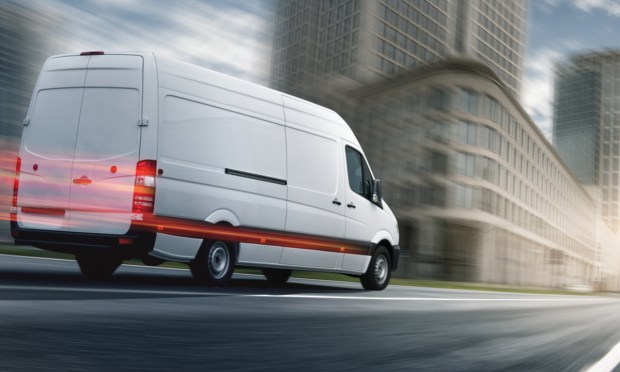Platforms Solve Need for Speed When Businesses Want More Than Same-Day Delivery

The engine of modern life whirrs mostly in the background, powering conveniences unimaginable decades ago.
But that doesn’t mean the engine runs uninterrupted. Last-mile delivery has long been a persistent problem in the logistics industry. The fragmented nature of the space, coupled with the diverse needs of customers in different markets, has made it challenging for enterprises to find reliable solutions.
That’s why PYMNTS CEO Karen Webster sat down with Dispatch CEO Andrew Leone and president Ryan Hanson to unpack the importance of technology, the demand for faster delivery, and the role of artificial intelligence (AI) in optimizing routes within the logistics landscape.
“Look at Chicago’s traffic versus Kansas City’s – there are all sorts of dynamics and different needs in every market, and bridging that at scale is challenging,” Leone explains.
“You have localized solutions that dominate local markets, but there’s not really a ton of incentive for them to build technology because they’re not going to scale, so you are left with a technology void,” adds Hanson.
This technology void leaves national-level enterprises working with multiple couriers and having to reconcile invoices from thousands of third-party companies across the country, highlighting the need for a platform that acts as a national partner, bridging the gap between fragmented local solutions and enterprise-level reliability, providing a scalable service to customers that offers consistent quality across geographies.
“Enterprises are going to transact the way that their customers are going to transact,” says Hanson. “If you can have an experience as a consumer where you are able to get things in two to four hours, and the enterprise trails that significantly, that’s not ideal.”
The Demand for Faster Delivery is Driving Ecosystem Innovation
There is an increasing pressure on enterprises and local delivery infrastructure to provide faster delivery options, driven by behavioral shifts among consumers who, having experienced on-demand convenience in certain facets of their daily lives, increasingly expect it across all others.
“The bigger challenge is how do you get [the item] to the right place, the right time for the right price,” says Hanson.
“Our pricing is all dynamic. We handle the pricing in every market for every type of delivery, looking at things like cargo capacity, the lead time that’s been given, the distance the item is going, and our algorithm spits [the pricing] out dynamically in real time,” adds Leone, explaining that this approach allows for flexibility and optimization, with high-urgency deliveries helping lower the cost of less-urgent deliveries.
Hanson notes that certain industry verticals have been quick to adopt the B2B benefits of rapid delivery, including paint, tile, flooring, roofing, HVAC, electrical and “anything that’s happening on a job site.”
Leone mentions that Dispatch’s platform data provides valuable insights into industry trends and seasonality. By analyzing customer cohorts and their growth rates, they can gauge the overall performance of different industries. This data helps them understand the changing demands of their customers and adapt their services accordingly.
“It’s pretty incredible the amount of data we have, even without looking at customer SKUs,” he says.
Insights from Data and AI Optimization Will Power Tomorrow’s Logistics
Software is eating the world, and increasingly next-generation innovations like AI are in turn eating existing software to ramp up efficiencies and streamline workflows by automating historical kinks.
This is particularly important within the logistics space, where businesses need a solid software foundation to support daily operations, and where uniformity and consolidation in offerings are key themes.
Powering growth in the space is the ability to integrate, through APIs and other software embeds, directly into the end-user’s platforms and portals.
“We typically do the direct integration ourselves so that we’re built right into the ticket and invoicing system. So then when [customers] start to move that same business that’s over the phone to eCommerce, there’s a dynamic price checkout,” explains Leone.
“One of the challenges that we face is the tech stacks that core customers have…a lot of customers just don’t have the technology investments in place to adapt quickly to disruption,” he adds.
Still, against this backdrop, nearly every business in every sector is looking for ways to embed AI into their processes.
“I’m most excited about how AI can be applied to our customer’s own data,” says Leone, explaining that Dispatch’s platform can “grab and build” from this data to optimize for things like asset utilization, delivery speed and price.
“It’s a great opportunity for us to look at that last-mile ecosystem holistically and give that power to the customer, because everyone has different objectives,” he explains. “A lot of our work now is continued optimization and algorithm investment.”
AI helps ensure that more deliveries are completed on time while efficiently allocating work to drivers, adds Hanson.
Regarding the adoption of autonomous vehicles and electric vehicles (EVs) in fleet management, Hanson acknowledges the growing interest in EVs and ESG focus but mentions that tangible action and investment in these technologies have been slow. He cites challenges such as charging infrastructure, range limitations, and the lack of a compelling return on investment (ROI) for larger goods.
“It will be valuable; it will be here. It’s a long-term play. We’re just focused on meeting the customer’s need today,” explains Hanson.

